-
 Bitcoin
Bitcoin $82,509.8850
-2.52% -
 Ethereum
Ethereum $1,800.3816
-3.46% -
 Tether USDt
Tether USDt $0.9996
-0.02% -
 XRP
XRP $2.0537
-1.80% -
 BNB
BNB $589.5226
-1.44% -
 USDC
USDC $1.0000
0.02% -
 Solana
Solana $116.3439
-6.85% -
 Dogecoin
Dogecoin $0.1595
-5.58% -
 Cardano
Cardano $0.6479
-2.79% -
 TRON
TRON $0.2366
-0.33% -
 Toncoin
Toncoin $3.5766
-9.59% -
 UNUS SED LEO
UNUS SED LEO $9.3922
-0.34% -
 Chainlink
Chainlink $12.7758
-5.57% -
 Stellar
Stellar $0.2586
-2.92% -
 Avalanche
Avalanche $18.1038
-3.99% -
 Sui
Sui $2.2274
-5.69% -
 Shiba Inu
Shiba Inu $0.0...01219
-1.98% -
 Hedera
Hedera $0.1627
-3.05% -
 Polkadot
Polkadot $4.0427
-1.01% -
 Litecoin
Litecoin $82.8658
-2.85% -
 MANTRA
MANTRA $6.3993
1.10% -
 Bitcoin Cash
Bitcoin Cash $298.9153
-0.95% -
 Bitget Token
Bitget Token $4.4795
-2.24% -
 Dai
Dai $0.9999
0.01% -
 Ethena USDe
Ethena USDe $0.9994
-0.04% -
 Hyperliquid
Hyperliquid $11.7782
-8.21% -
 Monero
Monero $212.0245
-3.58% -
 Pi
Pi $0.5720
-14.14% -
 Uniswap
Uniswap $5.8118
-4.56% -
 Aptos
Aptos $5.0504
-4.12%
How does a P2P network on a blockchain work?
Blockchain's P2P network uses consensus mechanisms (like PoW/PoS) to validate & add transactions to a shared, immutable ledger, enhancing security & transparency, but faces scalability challenges with high transaction volumes.
Mar 25, 2025 at 04:07 am
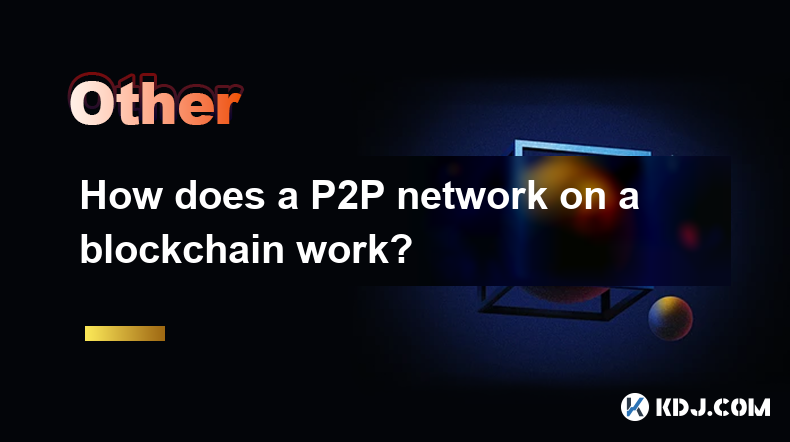
Key Points:
- Decentralized nature: P2P networks in blockchain eliminate intermediaries.
- Consensus mechanisms: Secure transactions through cryptographic hashing and consensus algorithms like Proof-of-Work or Proof-of-Stake.
- Transaction validation: Peers validate transactions independently before adding them to the blockchain.
- Data immutability: Once a transaction is added, it's permanently recorded and cannot be altered.
- Scalability challenges: Handling a large number of transactions efficiently is a key challenge.
How Does a P2P Network on a Blockchain Work?
A blockchain's core functionality relies on a peer-to-peer (P2P) network. Unlike traditional systems with central servers, a blockchain distributes the ledger across numerous nodes. This decentralized architecture enhances security and transparency. Each node maintains a complete copy of the blockchain, creating redundancy and resilience against single points of failure.
The process begins with a transaction request. For example, Alice wants to send Bitcoin to Bob. Alice broadcasts this transaction request to the P2P network. This request contains details like the amount, sender's address, and receiver's address, all cryptographically secured.
The network's nodes then independently verify the transaction. This involves checking if Alice possesses sufficient funds and if the transaction is valid according to the blockchain's rules. This verification process is crucial for maintaining the integrity of the blockchain. Nodes utilize cryptographic hashing algorithms to ensure data integrity and prevent tampering.
Once a sufficient number of nodes validate the transaction, it is grouped with other validated transactions into a "block." The process of adding a block to the chain depends on the blockchain's consensus mechanism. Popular mechanisms include Proof-of-Work (PoW) and Proof-of-Stake (PoS).
PoW relies on computational power to solve complex cryptographic puzzles. The first node to solve the puzzle gets to add the block to the chain and is rewarded with cryptocurrency. PoS, on the other hand, selects validators based on the amount of cryptocurrency they stake, promoting energy efficiency.
After a block is added, all participating nodes update their copy of the blockchain. This ensures consistency across the network. The immutability of the blockchain prevents any single entity from altering past transactions, providing a high degree of security and trust.
The P2P network continuously propagates new blocks and transactions across all nodes. This constant communication and validation are essential for maintaining the integrity and consistency of the distributed ledger. The decentralized nature ensures that no single point of control exists, making the system resilient to attacks and censorship.
However, the P2P network's scalability poses a significant challenge. As the number of transactions increases, the network's capacity to process them efficiently can become a bottleneck. Various solutions are being explored to improve scalability, including sharding and layer-2 solutions. These aim to distribute the processing load more effectively across the network.
Furthermore, the consensus mechanism significantly impacts the network's performance and security. The choice of mechanism depends on the specific requirements of the blockchain, balancing factors like security, speed, and energy consumption. The selection of a consensus mechanism also determines the transaction fees and speed of confirmation.
The security of the P2P network is paramount. Cryptographic techniques protect the integrity of transactions and prevent unauthorized access or modification. The distributed nature of the ledger makes it incredibly difficult for malicious actors to compromise the entire system. Any attempt to alter a transaction would require controlling a majority of the nodes, a computationally and economically infeasible task in established blockchains.
The communication protocols used within the P2P network are crucial for efficient and secure information exchange. These protocols define how nodes connect, broadcast transactions, and share information about the blockchain's state. Well-designed protocols are vital for maintaining the network's stability and performance.
The process of node synchronization is also a key aspect. New nodes joining the network must download and verify the entire blockchain history. This process can be time-consuming, but it ensures that all nodes have a consistent view of the ledger. Mechanisms to optimize this process are essential for efficient network growth and onboarding.
Maintaining the network requires continuous monitoring and maintenance. Developers constantly work to improve the efficiency, security, and scalability of the P2P network. Updates and upgrades are frequently implemented to address vulnerabilities and enhance performance.
Finally, the governance structure of the blockchain influences the P2P network's operation. Decisions about network upgrades, consensus mechanism adjustments, and other crucial aspects are often determined through community governance processes.
Frequently Asked Questions:
Q: What is the role of cryptography in a blockchain's P2P network?
A: Cryptography secures transactions, ensures data integrity, and verifies the authenticity of participants. Hashing algorithms create unique fingerprints for each block, while digital signatures verify the sender's identity and prevent tampering.
Q: How does a P2P network handle transaction conflicts?
A: Consensus mechanisms resolve conflicts. The majority of nodes decide which version of the blockchain is valid, rejecting conflicting transactions.
Q: What are the limitations of a P2P blockchain network?
A: Scalability (handling many transactions), latency (transaction confirmation times), and energy consumption (especially with PoW) are key limitations.
Q: Can a single node control a P2P blockchain network?
A: No. The decentralized nature makes it extremely difficult for a single entity to control the network; it requires controlling a majority of the nodes.
Q: How does a new node join a P2P blockchain network?
A: A new node connects to existing nodes, downloads the entire blockchain, verifies its integrity, and then participates in the network.
Disclaimer:info@kdj.com
The information provided is not trading advice. kdj.com does not assume any responsibility for any investments made based on the information provided in this article. Cryptocurrencies are highly volatile and it is highly recommended that you invest with caution after thorough research!
If you believe that the content used on this website infringes your copyright, please contact us immediately (info@kdj.com) and we will delete it promptly.
- How XRPL Utility Can Support Token Price Growth
- 2025-04-04 05:35:12
- Long-dormant Bitcoin wallets have suddenly sprung to life
- 2025-04-04 05:35:12
- ExoraPad ($EXP), an innovative AI-powered launchpad exclusively developed for the XRP Ledger (XRPL), has reached an impressive milestone
- 2025-04-04 05:30:12
- XRP Price Surge Could Enable Early Retirement for Numerous Investors
- 2025-04-04 05:30:12
- XRP Price Prediction: Will XRP Bounce From This Support Or Continue Its Descent?
- 2025-04-04 05:25:12
- As US Treasury yields hit 6-month lows, Bitcoin (BTC) price may be poised for a breakout
- 2025-04-04 05:25:12
Related knowledge
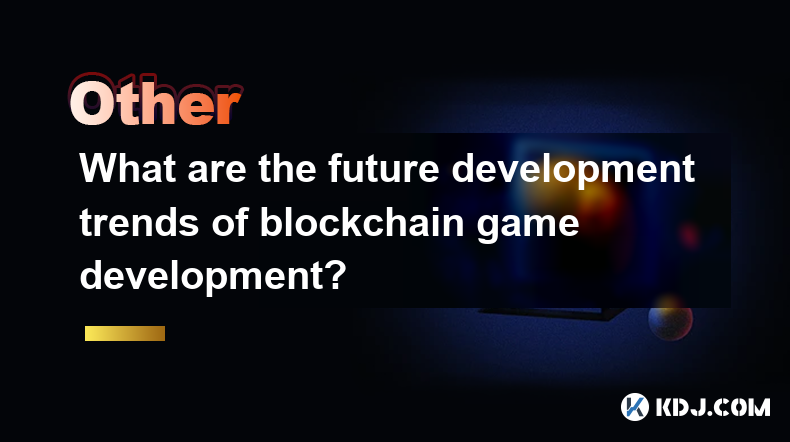
What are the future development trends of blockchain game development?
Apr 03,2025 at 05:00am
Blockchain technology has revolutionized various industries, and gaming is no exception. As we look to the future, several trends are set to shape the development of blockchain games. These trends not only promise to enhance the gaming experience but also to integrate blockchain technology more seamlessly into the gaming ecosystem. Let's explore these t...
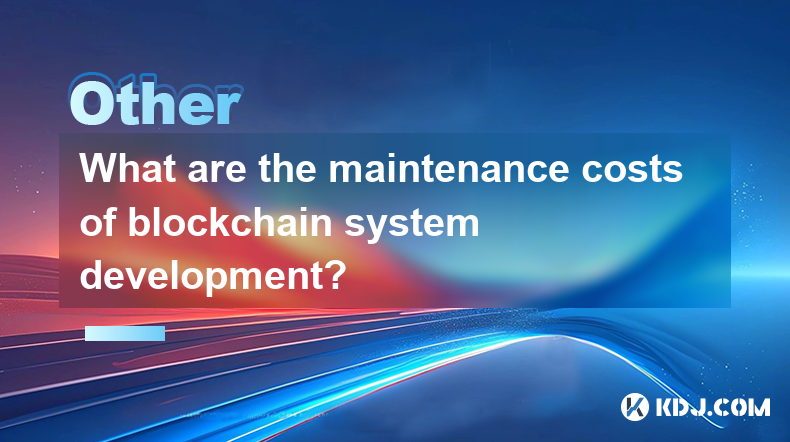
What are the maintenance costs of blockchain system development?
Apr 03,2025 at 06:07pm
The maintenance costs of blockchain system development are multifaceted and depend on various factors. These costs can include technical maintenance, security updates, infrastructure expenses, and personnel costs. Understanding these elements is crucial for anyone planning to develop or maintain a blockchain system. Technical MaintenanceTechnical mainte...
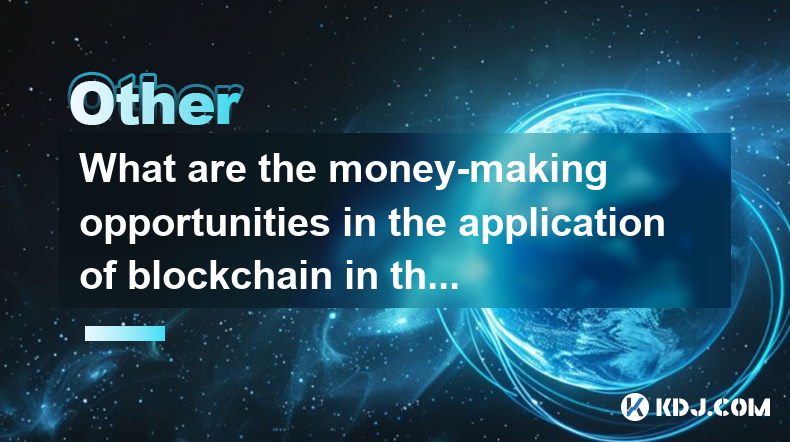
What are the money-making opportunities in the application of blockchain in the medical industry?
Apr 03,2025 at 03:35am
The integration of blockchain technology into the medical industry presents a myriad of money-making opportunities that can revolutionize healthcare systems. Blockchain's inherent characteristics, such as transparency, security, and immutability, make it an ideal solution for various medical applications. By leveraging blockchain, companies can develop ...
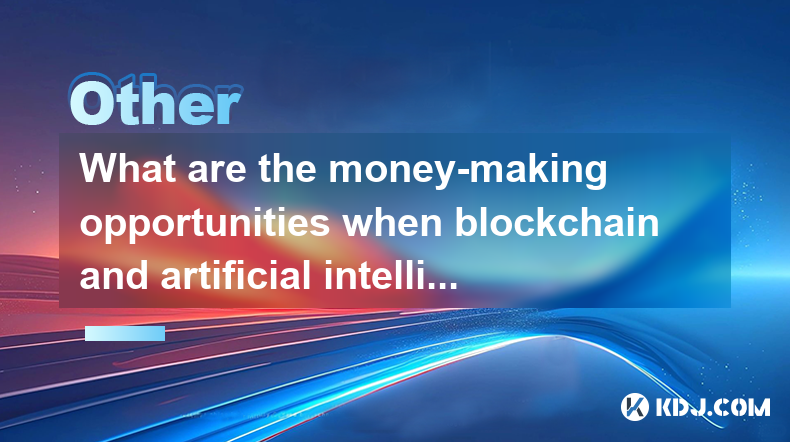
What are the money-making opportunities when blockchain and artificial intelligence are combined?
Apr 04,2025 at 01:28am
The convergence of blockchain and artificial intelligence (AI) presents a myriad of money-making opportunities within the cryptocurrency circle. This fusion leverages the decentralized and secure nature of blockchain with the analytical prowess of AI, creating innovative solutions and platforms that can generate significant revenue. From enhancing tradi...
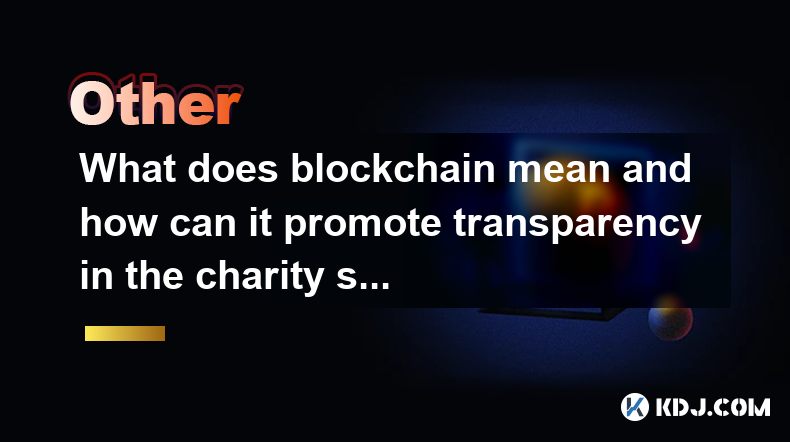
What does blockchain mean and how can it promote transparency in the charity sector?
Apr 03,2025 at 08:29pm
Blockchain technology is a decentralized, distributed ledger that records transactions across numerous computers. This ensures that the data is transparent and nearly impossible to alter retroactively. Essentially, blockchain serves as a digital ledger of all cryptocurrency transactions, enabling secure and direct exchanges without the need for intermed...
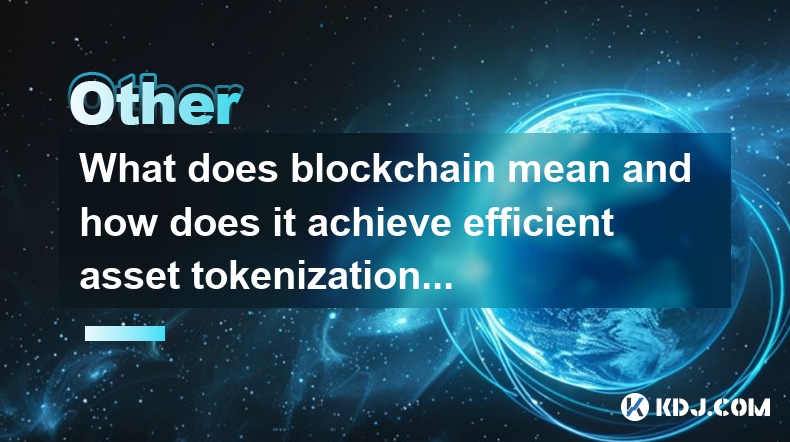
What does blockchain mean and how does it achieve efficient asset tokenization?
Apr 03,2025 at 07:57pm
Blockchain technology is a decentralized, distributed ledger that records transactions across numerous computers. It ensures that each transaction is secure, transparent, and immutable. The concept of blockchain was introduced with the launch of Bitcoin in 2009, but its applications have since expanded far beyond cryptocurrencies. At its core, blockchai...

What are the future development trends of blockchain game development?
Apr 03,2025 at 05:00am
Blockchain technology has revolutionized various industries, and gaming is no exception. As we look to the future, several trends are set to shape the development of blockchain games. These trends not only promise to enhance the gaming experience but also to integrate blockchain technology more seamlessly into the gaming ecosystem. Let's explore these t...

What are the maintenance costs of blockchain system development?
Apr 03,2025 at 06:07pm
The maintenance costs of blockchain system development are multifaceted and depend on various factors. These costs can include technical maintenance, security updates, infrastructure expenses, and personnel costs. Understanding these elements is crucial for anyone planning to develop or maintain a blockchain system. Technical MaintenanceTechnical mainte...

What are the money-making opportunities in the application of blockchain in the medical industry?
Apr 03,2025 at 03:35am
The integration of blockchain technology into the medical industry presents a myriad of money-making opportunities that can revolutionize healthcare systems. Blockchain's inherent characteristics, such as transparency, security, and immutability, make it an ideal solution for various medical applications. By leveraging blockchain, companies can develop ...

What are the money-making opportunities when blockchain and artificial intelligence are combined?
Apr 04,2025 at 01:28am
The convergence of blockchain and artificial intelligence (AI) presents a myriad of money-making opportunities within the cryptocurrency circle. This fusion leverages the decentralized and secure nature of blockchain with the analytical prowess of AI, creating innovative solutions and platforms that can generate significant revenue. From enhancing tradi...

What does blockchain mean and how can it promote transparency in the charity sector?
Apr 03,2025 at 08:29pm
Blockchain technology is a decentralized, distributed ledger that records transactions across numerous computers. This ensures that the data is transparent and nearly impossible to alter retroactively. Essentially, blockchain serves as a digital ledger of all cryptocurrency transactions, enabling secure and direct exchanges without the need for intermed...

What does blockchain mean and how does it achieve efficient asset tokenization?
Apr 03,2025 at 07:57pm
Blockchain technology is a decentralized, distributed ledger that records transactions across numerous computers. It ensures that each transaction is secure, transparent, and immutable. The concept of blockchain was introduced with the launch of Bitcoin in 2009, but its applications have since expanded far beyond cryptocurrencies. At its core, blockchai...
See all articles






















































































